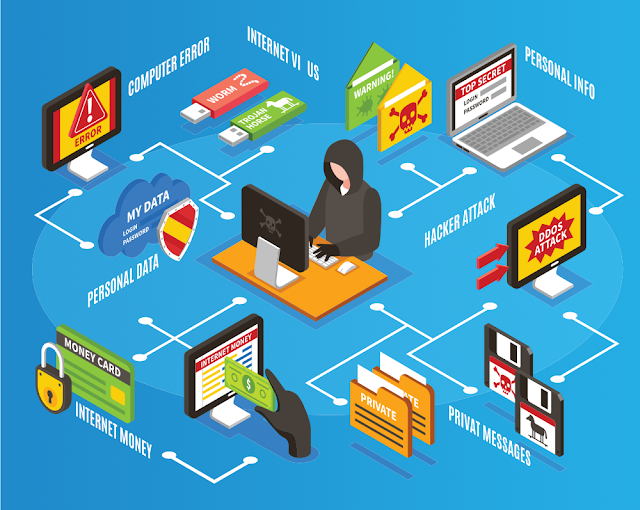 |
| Samjho Sekho Sekhao can provide you 16 Best Android Hacking Apps Collection 2024. |
Certainly! If you’re interested in ethical hacking and want to explore Android hacking apps, here’s a curated list of some powerful tools you can use on your rooted or non-rooted Android devices. Remember, these tools are meant for educational purposes, and always seek permission before performing any penetration testing on a device:
Note- Most of these apps will work on rooted Android phones And Not Tested🌚 Try At Your Own Risk
1.
Kali Linux NetHunter:
o The
first open-source penetration testing platform for Android-powered Nexus
devices and OnePlus One.
o Supports
features like wireless 802.11 frame injection, HID keyboard, 1-click MANA Evil
Access Point setups, and BadUSB MITM attacks.
o You
can explore the full Kali Linux toolset and connect to the App Store.
o Download
Kali Linux NetHunter1.
2.
AndroRAT:
o Stands
for Android and RAT (Remote Administrative Tools).
o Allows
remote control of an Android system without direct interaction with the phone.
o Features
include data collection (contacts, call logs, location), making phone calls,
sending texts, and more.
3.
Hackode:
o A
versatile app for penetration testing and ethical hacking.
o Offers
functionalities like scanning, reconnaissance, and exploitation.
o Includes
tools for network discovery, SQL injection, and more.
4.
zANTI:
o A
comprehensive network security assessment tool.
o Helps
identify vulnerabilities, perform network scans, and analyze network traffic.
5.
FaceNiff:
o Allows
you to intercept and monitor network traffic over Wi-Fi.
o Useful
for analyzing security flaws in web applications.
6.
Aispyer:
o A
mobile spy app that can track calls, messages, and other activities.
o Useful
for monitoring devices with proper consent.
7.
Shark For Root:
o A
traffic sniffer tool for Android devices.
o Captures
packets and helps analyze network traffic.
Remember to use these tools responsibly and always respect
privacy and legal boundaries. Happy hacking! 🕵️♂️🔍
Read More: Learn Firewall in Cryptography and Network Security
What
is Ethical Hacking?
 |
| We cleared our concept of Ethical Hacking because we also provided you free Android Hacking Apps Collection for free. |
Ethical hacking is
the practice of performing security assessments using the same techniques that
hackers use but with proper approvals and authorization from the organization
you’re hacking into. The goal is to use
cybercriminals’ tactics, techniques, and strategies to locate potential
weaknesses and reinforce an organization’s protection from data and security
breaches12.
Here are some key differences between ethical hacking and
malicious hacking:
Ethical
Hackers (White-Hat Hackers):
- Purpose: Ethical hackers
are hired specifically to help find and secure vulnerabilities that may be
susceptible to a cyber-attack.
- Authorization:
They have the approval of the company that hires them.
- Activities:
Ethical hackers assess systems and networks, regularly report their
findings, and work to improve security.
- Examples of Activities:
Developing strong security structures, maintaining security systems, and
creating tools like ad blockers and firewalls.
Malicious
Hackers (Black-Hat Hackers):
o Purpose:
Black-hat hackers illegally break into victim networks with malicious intent.
o Activities: They
disrupt systems, steal or destroy data, and engage in harmful activities.
o Examples
of Activities: Breaking into computer networks, writing
malware, and accessing accounts without permission.
In summary, ethical hacking aims to strengthen an
organization’s security by proactively identifying vulnerabilities, while
malicious hacking seeks to exploit weaknesses for harmful purposes. Ethical
hackers play a crucial role in defending against cybercrime and enhancing
information security. 🕵️♂️🔒
Read More: Best free cyber security resources for US small businesses 2024
What
are some common types of cyber-attacks?
Certainly! Cyber-attacks come in various forms, each with
its own methods and objectives. Here are some common types of cyber-attacks:
1.
Malware:
o Malware,
short for malicious software, encompasses various subsets:
§ Ransomware: In a
ransomware attack, the adversary encrypts a victim’s data and demands payment
for the decryption key.
§ Fileless
Malware: Utilizes native, legitimate tools within a system to
execute attacks without installing additional code.
§ Spyware:
Collects information about a user’s web activity without their knowledge.
§ Adware:
Watches online activity to determine which ads to display.
§ Trojan:
Appears as legitimate software but hides malicious intent.
§ Worms:
Self-replicating programs that spread to other computers.
o Malware is the most common type of cyber-attack.
2.
Denial-of-Service (DoS) Attacks:
o Overwhelm a system’s resources, rendering it unable to respond to legitimate service requests.
3.
Phishing:
o Deceptive communication where attackers impersonate trusted entities to trick users into revealing sensitive information.
4.
Spoofing:
o Fake’s
identity information to gain unauthorized access.
5.
Identity-Based Attacks:
Target
user credentials, such as username-password combinations.
6.
Code Injection Attacks:
o Exploit vulnerabilities to inject malicious code into applications.
7.
Supply Chain Attacks:
o Target
vulnerabilities in third-party software or components.
8.
Insider Threats:
o Attacks from within an organization by employees or contractors.
9.
DNS Tunneling:
o Abuses
DNS protocols to bypass security controls.
10.
IoT-Based Attacks:
o Exploit
vulnerabilities in Internet of Things (IoT) devices.
Remember, understanding these attack types helps us better
defend against them. Stay vigilant and prioritize cybersecurity! 🔒👾
How
can I protect myself from cyber-attacks?
 |
| I clearly guide you on how you protect yourself from cyber-attacks easily. |
Certainly! Protecting yourself from cyber-attacks is
crucial in today’s digital landscape. Here are some essential steps you
can take to enhance your cybersecurity:
1.
Enable Multifactor Authentication (MFA):
o Turn
on MFA for your accounts whenever possible. It adds an extra
layer of security by requiring a second form of verification (such as a text
message or authentication app) in addition to your password.
2.
Keep Your Software Updated:
o Regularly
update your software, including operating systems, applications, and
antivirus programs. Enable automatic updates to stay protected against known
vulnerabilities.
3.
Think Before You Click:
o Be
cautious when clicking on links or downloading attachments. Phishing emails
often trick users into revealing sensitive information or installing malware.
Verify the sender’s legitimacy before taking any action.
4.
Use Strong, Unique Passwords:
o Create
complex passwords that include a mix of uppercase and lowercase letters,
numbers, and special characters.
o Avoid
reusing passwords across different accounts. Consider using a
password manager to securely store and manage your passwords.
5.
Secure Your Wi-Fi Network:
o Change
the default password for your router and use WPA3 encryption if
available.
o Disable
remote administration and regularly check connected devices.
6.
Regularly Back Up Your Data:
o Backup
important files to an external drive or cloud storage. In case
of a ransomware attack, having backups ensures you can restore your data.
7.
Be Skeptical of Unsolicited Emails and
Calls:
o Verify
the identity of anyone requesting sensitive information.
Scammers often impersonate legitimate organizations.
o Avoid
sharing personal details over the phone unless you initiated the call.
8.
Install Antivirus and Anti-Malware
Software:
o Use
reputable security software to detect and remove malicious programs.
o Regularly
scan your devices for threats.
9.
Secure Your Social Media Accounts:
o Adjust
privacy settings to limit the information visible to others.
o Be
cautious about sharing personal details publicly.
10.
Educate Yourself and Stay Informed:
o Learn
about common cyber threats, phishing techniques, and safe online practices.
o Stay
updated on security news and follow best practices.
Remember, cybersecurity is a continuous effort. By
implementing these measures, you can significantly reduce the risk of falling
victim to cyber-attacks. Stay vigilant and protect your digital presence! 🔒🌐
Read More: Future Of Cybersecurity Dangerous Time Come In The World
My
Android Hacking Apps Collection
👉Anonymity
apps
👉3rd
party app stores
👉Calls
and SMS apps
👉Cryptography
apps
👉DDoS
apps
👉Forensic
apps
👉Some
learning apps
👉MITM
Apps
👉Networking
apps
👉Pen
testing apps
👉Cam
hacking apps
👉Sniffing
apss
👉Terminal
apps
👉Bombing
apps
👉WhatsApp
spying apps
👉WIFI
hacking apps
Note- Most of these apps will work on rooted Android phones And Not Tested🌚 Try At Your Own Risk




![How to Add a Back to Top Button in Blogger [Special]](https://blogger.googleusercontent.com/img/b/R29vZ2xl/AVvXsEj0WQs0ZGgIjAoNLYkxZn2jJWPmd3ypPmf5oIXi1TXgw9_7fEh-Ocv0oGRkBgxXTBFbFCWW1LwXOuejU8dhDZ0NR0rZT4X0Fks4Tv-pdf8WPoUKAn6hv_e7tkP9bb2XYvSjVt73bGHnPb-ynhO5vMKfhLZKaKMm9wVUUOdrd7jr89UZzrPx2rC2ObxhdA/w72-h72-p-k-no-nu/Untitled.png)
0 Comments